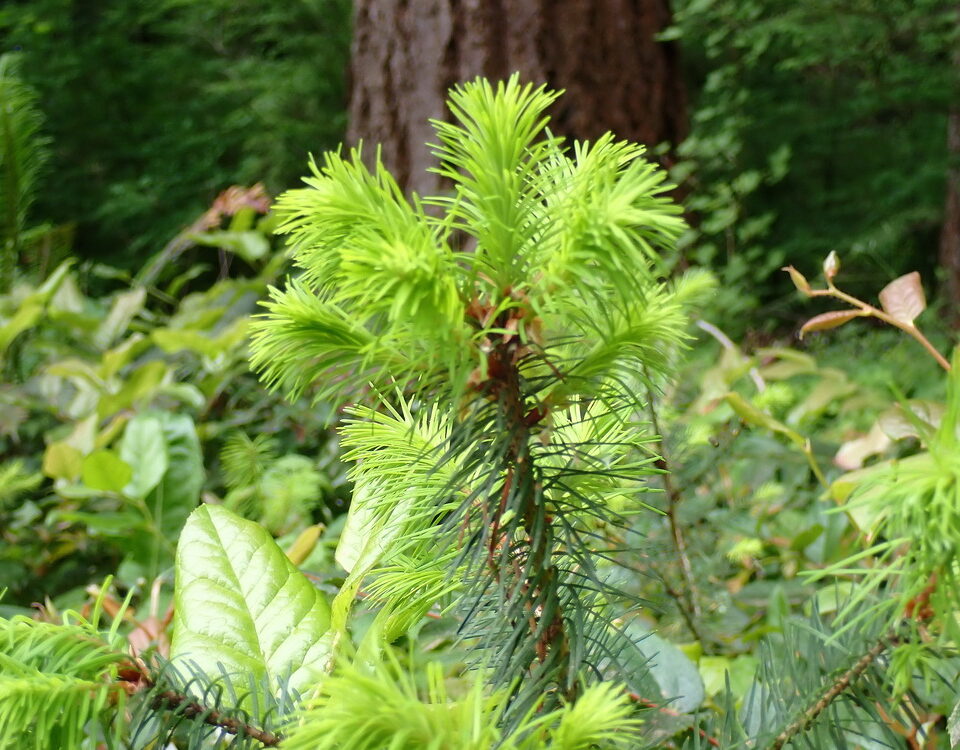The other day, I was surprised and delighted to find a half-dozen volunteer Douglas Fir seedlings in a spot that might actually get enough sunlight to support them. I happened upon these foot-high trees in a sunny edge area, growing amid a thick stand of last year’s weed stalks. In the past, the area had been “mowed” annually by City staff using string trimmers, but with the City’s budget cuts, the crews are now spread too thin to keep up. It made me wonder if neglect could sometimes be a good thing when it allows for natural regeneration of native trees and shrubs? Perhaps, but not in this area – unfortunately, it has an infestation of Hedge Bindweed.
How many hours of direct sunlight do Douglas Firs need to get established? Some sources suggest they are somewhat shade tolerant, but they do best in full sun, and pure stands typically become established after events like fire or logging remove the previous trees and open the canopy.
Historically in the Pacific Northwest, major forest fires every hundred years or so would open the canopy for new generations of Douglas Firs. Thus, old-growth Douglas Firs covered much of the Puget Lowlands when large-scale logging commenced in the 1850s. Clear-cutting opened the canopy as effectively as the fires of the past, so the second and third growth stands of timber were also dominated by Douglas Firs. Some of these stands have been preserved in the region’s urban parks but, ironically, their very protection in these areas may threaten their long-term survival. Why? Because without crowning fires or clear-cutting to open the canopy, the Douglas Firs may eventually be replaced by shade-tolerant Western Redcedars and Western Hemlocks currently growing up beneath them.
I hope that the little volunteer Douglas Firs will survive. The edge they are in will get a few hours of direct sunlight on a summer day, and they may get some help from the large Douglas Firs growing in the stand of trees behind them. In truth, I think their long-term chances are slim, but I’m always rooting for volunteers.
